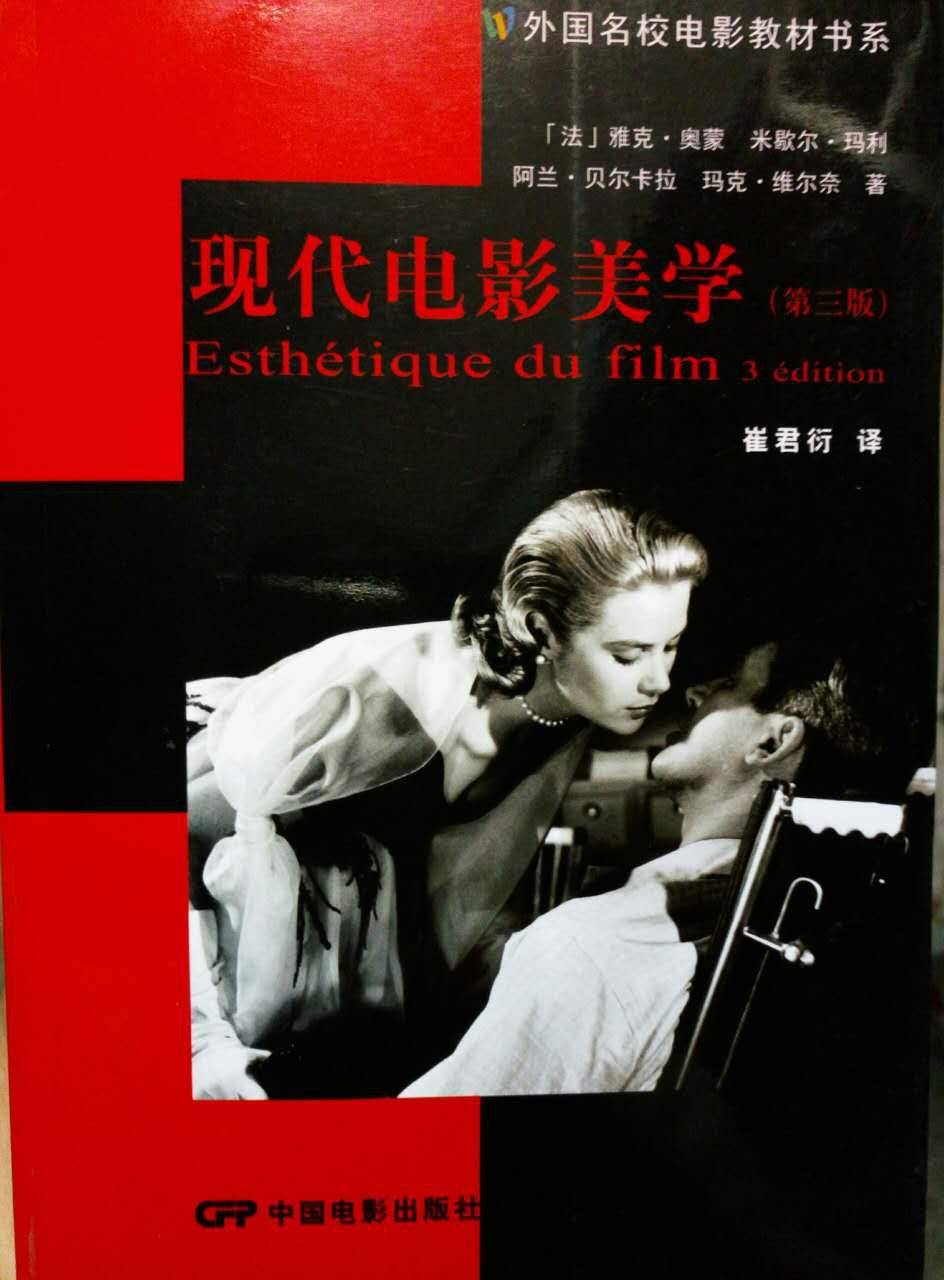WULOLIFE
《现代电影美学(第三版)》作者: / 米歇尔·玛利 / /马克·维尔内 出版社: 中国电影出版社
《现代电影美学(第三版)》作者: / 米歇尔·玛利 / /马克·维尔内 出版社: 中国电影出版社
Sale
Sold out
Regular price
€19,00 EUR
Regular price
Sale price
€19,00 EUR
Unit price
per
Tax included.
Shipping calculated at checkout.
Couldn't load pickup availability
Description
内容简介 · · · · · ·
《现代电影美学(第3版)》是电影研究的经典读物,已被译成11种语言。从艺术史、文学理论、符号学和精神分析学中广征搏引,为学生和影迷提供电影美学和视听美学的全景。这是一部名副其实的跨学科*作。无需任何专业知识准备即可入门。
作者简介 · · · · · ·
四位作者分别是巴黎第三大学电影美学教授雅克·奥蒙、米歇尔·玛利、马克·维尔内和《电影手册》编辑阿兰·贝尔卡拉。
译者崔君衍哈佛大学高级访问学者,香港城市大学访问教授。主要著述有《现代电影理论信息》、《电影心理学研究》、《电影符号学》等;主要译作有《世俗神话》、《电影哲学概说》、《影片美学》;主编有《电影美学与心理学》、《电影艺术词典》、《现代艺术大辞典》电影分科等。
目录 · · · · · ·
●导言一、电影书刊分类
1.“大众”出版物
2.影迷读物
3.理论和美学著述二、电影理论和电影美学
1.“原生性”理论
2.描述性理论
3.电影理论与美学
4.电影理论与技术实践
5.各种电影理论章 作为视像和声音再现形式的影片一、影片的空间二、景深技巧
1.透视法
2.景深三、“镜头”概念电影,声音的再现
1.经济技术因素及其发展史
2.美学和意识形态因素参考读物第二章 蒙太奇一、蒙太奇的原则
1.蒙太奇的目的
2.蒙太奇的动作形态
3.蒙太奇的“宽泛”定义二、蒙太奇的功能
1.经验研究
2.更系统的描述三、蒙太奇的意识形态
1.安德烈·巴赞和“透明”电影
2.爱森斯坦和“辩证电影”
参考读物第三章 电影与叙事一、叙事电影
1.电影与叙事相逢
2.非叙事电影
3.叙事电影,研究对象与研究目的二、虚构影片
1.
2.参照体的问题
3.叙述、叙事、故事体
4.叙事符码、功能与人物三、电影中的现实主义
1.表现材质的现实主义
2.影片主题的现实主义
3.逼真性
4.类型效果真实印象参考读物第四章 电影和语言一、电影语言
1.一个旧概念
2.早期理论家
3.电影语法
4.电影语言的经典观念
5.无符号的语言二、电影。纯语言还是泛语言?
1.电影泛语言和纯语言
2.影片的可理解性三、电影语言的异质性
1.表达的介质
2.符号学中符码的概念
3.电影的特殊符码
4.非特殊符码影片文本分析
1.《语言和电影》中的“影片文本”概念(麦茨)
2.实例,格里菲斯的《党同伐异》的文本系统
3.文学符号学中的文本概念
4.电影与电影观众一、电影观众
1.再现性幻象的条件
2.“塑造”观众
3.电影学的观众
4.电影观众,想象的人
5.研究电影观众的新方法二、电影观众和对影片的认同
1.认同在精神分析理论中的地位
2. 电影中的双重认同
1.电影中的初级认同
2.电影中的次级认同
3.认同与结构
4.认同与陈述
5.版参考书目第三版参考书目人名、片名及电影术语对照表
1.“大众”出版物
2.影迷读物
3.理论和美学著述二、电影理论和电影美学
1.“原生性”理论
2.描述性理论
3.电影理论与美学
4.电影理论与技术实践
5.各种电影理论章 作为视像和声音再现形式的影片一、影片的空间二、景深技巧
1.透视法
2.景深三、“镜头”概念电影,声音的再现
1.经济技术因素及其发展史
2.美学和意识形态因素参考读物第二章 蒙太奇一、蒙太奇的原则
1.蒙太奇的目的
2.蒙太奇的动作形态
3.蒙太奇的“宽泛”定义二、蒙太奇的功能
1.经验研究
2.更系统的描述三、蒙太奇的意识形态
1.安德烈·巴赞和“透明”电影
2.爱森斯坦和“辩证电影”
参考读物第三章 电影与叙事一、叙事电影
1.电影与叙事相逢
2.非叙事电影
3.叙事电影,研究对象与研究目的二、虚构影片
1.
2.参照体的问题
3.叙述、叙事、故事体
4.叙事符码、功能与人物三、电影中的现实主义
1.表现材质的现实主义
2.影片主题的现实主义
3.逼真性
4.类型效果真实印象参考读物第四章 电影和语言一、电影语言
1.一个旧概念
2.早期理论家
3.电影语法
4.电影语言的经典观念
5.无符号的语言二、电影。纯语言还是泛语言?
1.电影泛语言和纯语言
2.影片的可理解性三、电影语言的异质性
1.表达的介质
2.符号学中符码的概念
3.电影的特殊符码
4.非特殊符码影片文本分析
1.《语言和电影》中的“影片文本”概念(麦茨)
2.实例,格里菲斯的《党同伐异》的文本系统
3.文学符号学中的文本概念
4.电影与电影观众一、电影观众
1.再现性幻象的条件
2.“塑造”观众
3.电影学的观众
4.电影观众,想象的人
5.研究电影观众的新方法二、电影观众和对影片的认同
1.认同在精神分析理论中的地位
2. 电影中的双重认同
1.电影中的初级认同
2.电影中的次级认同
3.认同与结构
4.认同与陈述
5.版参考书目第三版参考书目人名、片名及电影术语对照表
